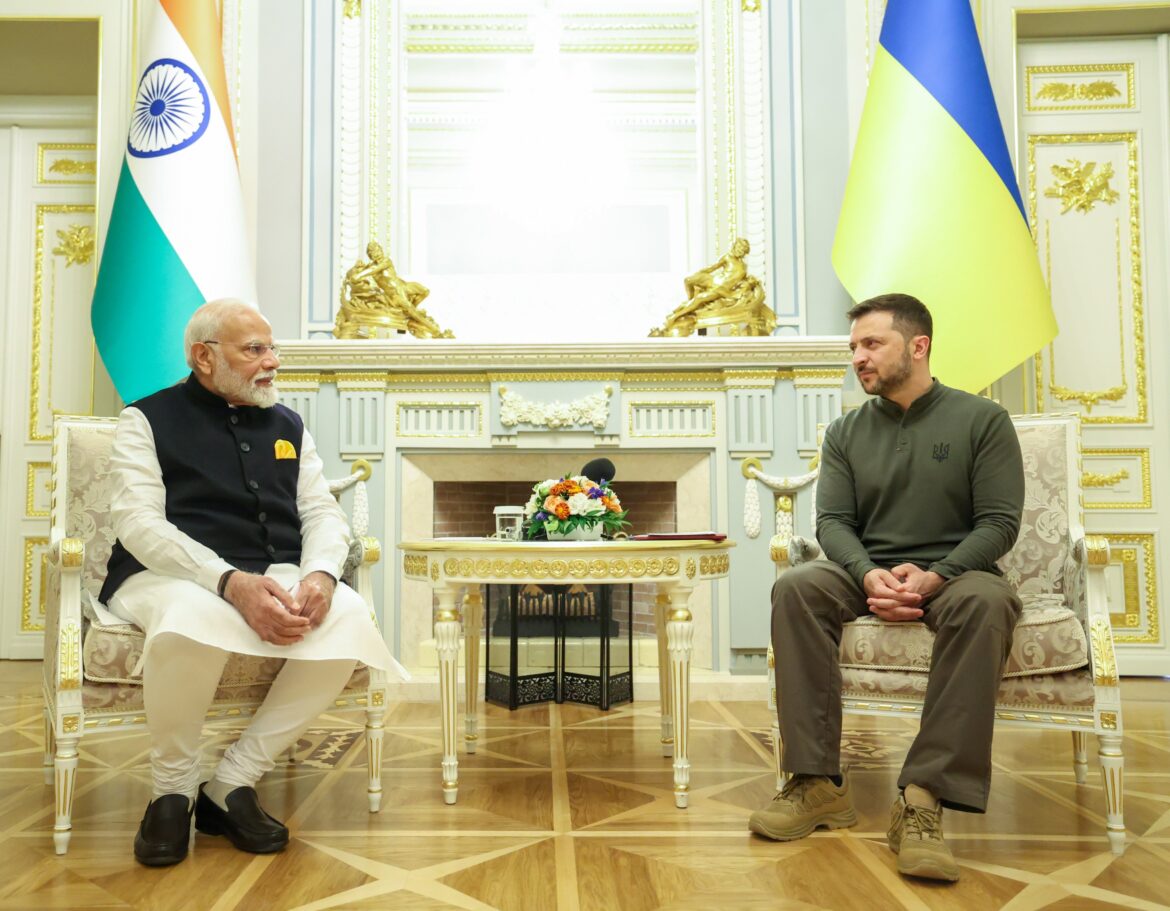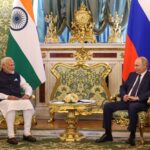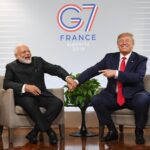Ukraine and India, despite geographic distance and differing regional alliances, share a layered history marked by economic, educational, and strategic collaborations. With roots from the Soviet era, further strengthened by 30 years of diplomatic engagement, these relations have been repeatedly tested — most recently by the complexities introduced by the Russia-Ukraine conflict, and the pervasive influence of Russian disinformation. Understanding this relationship today requires a careful look at both historical cooperation and the impact of evolving narratives, especially those shaped by Russia’s media influence in India.
Foundations of Ukraine India Cooperation
India recognized Ukraine’s independence on December 26, 1991, and within a month, the two countries formally established diplomatic ties. Ukraine quickly established an embassy in New Delhi, and by 1993, India reciprocated with an embassy in Kyiv, ushering in a new phase of partnership. However, India-Ukraine ties predate this modern diplomatic era and are grounded in Soviet-era cooperation, where Ukrainian engineers and experts were instrumental in India’s industrial and energy sectors. Key collaborations included the establishment of steel and machinery plants and the provision of expertise in oil and gas exploration, marking Ukraine as a critical partner in India’s industrial journey.
This strong foundation, however, often goes unrecognized today, with many in India perceiving the Soviet Union’s contributions as solely Russia’s. Ukrainian engineers and specialists, pivotal to India’s development, have largely been overshadowed by this historical misperception, which has been exacerbated by modern Russian narratives.
The Strategic Framework: Diplomatic and Economic Milestones
In March 1992, a milestone was achieved with the Treaty of Friendship and Cooperation between Ukraine and India. This treaty established a framework for collaboration, including a joint intergovernmental commission on trade, technology, industry, and cultural exchange. Over the years, trade between the two countries has flourished, peaking in 2021 at $3.6 billion, making India Ukraine’s second-largest Asian export destination after China. India’s imports from Ukraine primarily consist of agricultural products, like fats and oils, highlighting Ukraine’s role in India’s food security.
This growing economic relationship took a hit in 2022, when Russian invasion disrupted Ukrainian exports, reducing bilateral trade volume by more than half. Nevertheless, India persisted as one of Ukraine’s top trading partners, with trade in 2022 amounting to $2.58 billion. Such resilience underscores the robustness of their economic connection, even amid global instability.
Defense Ties and the Shift in Strategic Priorities
Beyond trade, military-technical cooperation has been a critical area of collaboration. In September 2021, Ukraine’s state-owned Zorya-Mashproekt signed a significant contract to supply gas turbine engines for the Indian Navy. However, the Russian invasion disrupted these plans, leading India to diversify its defense suppliers and develop domestic capabilities, with support from the United States. India’s longstanding reliance on Russian arms, rooted in Cold War alliances, has added complexity to its position on the Russia-Ukraine conflict.
India’s official stance on the conflict has been cautious neutrality. Rooted in its Cold War-era non-alignment policy, India refrains from explicitly siding in global disputes. This tradition continues, with Foreign Minister S. Jaishankar defining a policy of “plurilateralism,” or strategic partnerships across diverse, sometimes conflicting, partners. This approach allows India to engage with various nations, including Russia, Ukraine, and Western allies, while prioritizing its own security needs.
Russian Disinformation and Its Influence on Ukraine India Relations
One of the increasingly complex challenges in Ukraine-India relations is the impact of Russian disinformation, which skews narratives and public opinion in ways that benefit Moscow’s geopolitical aims. Russia’s state-backed media has significant influence in India, where it often frames the Russia-Ukraine conflict as a proxy struggle incited by NATO. This portrayal, coupled with India’s historical ties to the Soviet Union, has fostered an understanding in parts of Indian society that sympathizes with Russia, complicating efforts to establish broader support for Ukraine.
A recent conference titled “Russian Disinformation: Tactics, Influence, and Threats to National Security,” held in Washington, D.C., highlighted the growing global concern over Russia’s manipulation of information. Bringing together top experts in media, politics, security, and human rights, as well as representatives from various religious communities, the conference delved into how Russian disinformation seeks to destabilize governments, manipulate elections, and even undermine religious freedoms in both occupied territories and other sovereign nations. This event underscored the scope and scale of Russian disinformation and its threat to international stability.
The conference also provided an essential platform to examine how these tactics affect national security worldwide, revealing the channels through which Russia infiltrates media ecosystems to sway opinions. The agenda covered critical topics that resonate deeply in India, where Russian narratives exploit anti-Western sentiments and historical skepticism of foreign influence, reframing Russia’s role as a “counterbalance” to perceived Western domination. Through disinformation, Russia has effectively embedded a narrative in India that overlooks Ukraine’s sovereignty while maintaining a strategic alignment with Moscow.
By tapping into India’s colonial past and amplifying anti-Western rhetoric, Russian media has managed to foster an enduring sympathy in parts of the Indian public, who may perceive the Russia-Ukraine war as a conflict primarily between Russia and NATO. This approach minimizes Ukraine’s position as an independent actor and stifles recognition of Ukraine’s historical contributions to India’s development during the Soviet era.
The insights shared at the Washington conference underscore the need for Ukraine to counter these narratives actively. Highlighting Ukraine’s own role in India’s industrial and educational history, and promoting current avenues for collaboration in technology, agriculture, and education, can help Ukraine rebalance its image in India. By addressing disinformation head-on, Ukraine can more effectively engage India’s policymakers and public, making a case for the two nations’ mutual benefit in a multipolar world that respects each country’s sovereignty.
Economic Constraints and Russian Oil Dependency
India’s continued import of Russian oil, even amid global sanctions, is another factor affecting its stance on the Russia-Ukraine conflict. With high inflation and significant poverty levels affecting millions of Indians, affordable oil remains a priority for India’s economy. According to the Times of India, over 415 million people in India were lifted out of poverty between 2005 and 2021, but another 229 million still live below the poverty line. With such pressing domestic needs, the Indian government justifies its reliance on Russian energy imports as a measure to stabilize prices and maintain economic resilience.
Restoring Balance and Revitalizing Historical Recognition
To counter Russian disinformation and rebuild a balanced narrative, Ukraine needs to engage India on multiple levels, emphasizing both historical ties and new avenues for cooperation. Acknowledging Ukraine’s Soviet-era role in India’s industrial development and promoting current contributions in technology, education, and agriculture can help counter the oversimplified Russia-centric narrative. Ukrainian diplomacy has an opportunity to foster dialogue and remind Indian policymakers and the public of Ukraine’s role as a distinct and capable partner.
A Path Forward in an Era of Multipolar Engagement
As the global order grows increasingly multipolar, India’s approach to Ukraine reflects a pragmatic balance of historical ties, domestic needs, and strategic autonomy. Ukraine’s engagement with India thus needs to account for these factors, finding ways to promote cooperation that aligns with India’s evolving priorities. By framing their relationship in a way that respects India’s neutrality while emphasizing mutual benefits, Ukraine can work to build a foundation for long-term collaboration that resists external distortion and serves both countries’ interests in a shifting geopolitical landscape.
In an era where information warfare is as consequential as traditional warfare, Ukraine-India relations stand as a testament to the importance of historical context, economic resilience, and the challenge of navigating narratives shaped by external influences. As Ukraine continues to resist Russian aggression, strengthening its partnership with India will require not only economic and diplomatic outreach but also a nuanced understanding of the narratives that influence Indian public and policy sentiment.
Disclaimer: The opinions and views expressed in this article/column are those of the author(s) and do not necessarily reflect the views or positions of South Asian Herald, its editorial team, or its affiliates. South Asian Herald does not endorse any opinions or statements made within the content.






